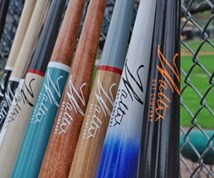Breaking Stereotypes in Product Development Practices
Contrary to common practice, manufacturers should consider manufacturing analysis first before moving into detailed product design. CAM first; CAD later.
#columns
We confound the designs by believing that a finely detailed 3D CAD model is the replica of an actual manufactured product when it gets annotated with product modification instructions. But that’s not true. And we have known it all along. It’s been 60 years since the introduction of CAD, and yet, we, the people of the manufacturing industry, haven’t been able to deploy its correct usage.
Had we done it correctly, the industry would see fewer requests for information (RFIs), design reworking hours, and wastage in resources. Now, being in the industry for years, do we have a solution to end these diversions?
Featured Content
The answer is still out there and is contradictory to our well-established practice that says design first and then manufacture. The answer lies in considering the analysis of manufacturing capability first and then developing the detailed designs accordingly.
A Reverse-Practice Example
Mazda, the well-known car maker, is practicing an idea of design in the manufacture of its car doors. Its approach is interesting and contrary to our current practices. Mazda collaborates with a third-party manufacturer and supplier of car doors — Hirotec — and abandons traditional practices that are deep-rooted between design teams and manufacturing teams.
Mazda develops the styling and outer surface of the door, while the door fabricator, Hirotec, capitalizes on its capabilities in the development of the internal beam designs and fixtures. Hirotec then sends the doors to assembly lines in sequence and transports the final manufactured door to Mazda.
Mazda calls all the shots while Hirotec acts accordingly, both trusting each other’s decisions. Once the basic CAD data is provided to Hirotec, the company makes necessary and critical value additions to critical parts based on its own expertise.
Customary Design Development Practices
The manufacturing industry today is accustomed to a similar kind of practice as done by Mazda, though it mainly happens inside the organization and between design and manufacturing teams. It’s a very different approach. First drafts of designs are prepared with slightly underdone geometry and detailed engineering and are then extensively reworked by the manufacturing engineers.
The latter understand manufacturing processes and their impacts on the job more in-depth and can judiciously impart missing details for manufacturing execution and reproducibility. One may say the designs are radically produced by design engineers, but when it comes to finalizing the ideas, production engineers have an upper hand.
CAM-Driven CAE
Another fact that remains unacknowledged is although we assess design based on CAD models, shopfloor capabilities prominently govern the decision-making process. Reduction of costs and related decisions provide proof. We have adopted a simulation-based design inspection where physical conditions are set based on the machine shop competence.
Additionally, numerous major industrial engineering companies that are using 2D have nonetheless invested in sophisticated 3D CAD systems such as SolidWorks or Inventor to get acquainted with CAE, which is majorly driven by CAM. For manufacturers, 2D was good but 3D is better. Major manufacturing organizations provide a great example of the rising adoption of CAE.
What’s interesting is that we are using this same 3D for CAM further in downstream processes. The hidden fact is we are developing a complex 3D model not for analysis; it’s pointless. We are making it to drive the manufacturing stage more easily. These models, in reality, capture the engineering essence of the product to be developed, which can help predict the behavior of the real physical product.
Clearing Up the Stale Air
The manufacturing world is seeking to increase its efficiency by implementing new methods. But instead of looking elsewhere, if we focus more on our traditional practices and modify them, we will see a noticeable improvement. In lieu of making tradeoffs between design teams and manufacturing engineers during preliminary stages of design, pioneers recommend conscious early inclusion of manufacturing teams, conditions and terms.
Because all our decision-making processes and critical judgments are largely driven by the shopfloor needs, including them early and including them willfully is of vital importance.
About the Author
Usha B. Trivedi
Usha Trivedi is an engineer with Hi-Tech CADD Services. She contributes in-depth articles for the mechanical and industrial equipment design, furniture design and fabrication sectors. Her contributions are primarily focused on enabling engineering professionals, furniture manufacturers and fabricators to optimize design outcomes through CAD and CAE tools.
RELATED CONTENT
-
From Setup to Final Pass: CNC Tool Management
With today’s high-powered and graphic-intense CNC, operators have everything under control, all on one screen.
-
Why Using Pirated Software is Riskier Than Ever
Machine shops and manufacturers that use pirated software risk losing much more – both directly and indirectly.
-
What Is Trochoidal Turning? How Might Shops Benefit From It?
While trochoidal milling might be a more well-known toolpath strategy, trochoidal turning can offer similar benefits such as high material removal rates especially for rough-turning operations.






